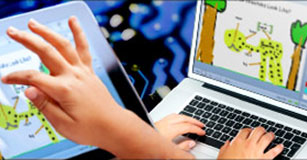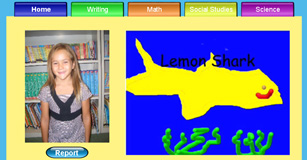Meet the Needs of Digital Learners Through BYOD
Using BYOD to meet Common Core, build digital citizenship, and engage learners.

Like many districts across the nation, Santee School District has been struggling to meet the needs of its digital learners. We fund technology purchases for our schools every year, but in a small district with a finite budget, we sometimes feel a day late, and a dollar short. No matter what we purchase, it was never enough to meet the needs of every learner in every classroom. Even with significant, consistent investment, we are unable to provide ubiquitous access to technology for all students.
As we implement Common Core, we are faced with yet another pressing need to put technology tools into the hands of every child. With over 39 references to technology, Common Core requires teachers to provide students with relevant, meaningful learning opportunities that reflect the digital world within which they learn.
Long gone are the days when technology was an optional activity for advanced students, or limited to the classrooms of a few highly enthusiastic teachers. Today, every fifth grade student is required to “use technology, including the Internet, to produce and publish writing as well as to interact and collaborate with others” (CCSS.ELA-Literacy.W.5.6).
Publishing requires students to understand both the purpose of writing and the demands of their audience (also included in CCSS.ELA-Literacy.W.5.4), and they must learn to meet both needs using structure, text features, and format. The requirement that students actually publish their writing is a significant leap from the days of merely turning in an essay to the teacher and receiving a grade. How can we ever hope to accomplish the leap from handing in essays to publishing work to specific, genuine audiences with a cart or two of netbooks at each school and four or five computer stations in each classroom?
The simple answer: we can’t. Last year our instructional technology leadership committee made a commitment to find a solution to this shortcoming, and thus began our journey toward bring your own device (BYOD). Why BYOD? BYOD offers students an opportunity to learn anytime, anywhere, using devices that are already personalized for students.
As we researched districts that were succeeding with BYOD, we discovered that most of the devices brought in by students were more up-to-date with newer features than the technology we were purchasing for the classroom. We explored the research Living and Learning with Mobile Devices, a study from Learning First Alliance and Grunwald Associates, with support from AT&T, which showed that 56% of parents would be willing to purchase a mobile device for their child’s school use. In addition, those parents clearly stated that they would prefer that their child be placed in a classroom that used mobile devices if given the choice.
We recognized that classrooms would not be instantly, magically transformed by the mere presence of mobile devices. We wanted to ensure that incorporating students’ personal devices in the classroom would both enhance learning and, rather than serving as a distraction, provide an opportunity to teach responsibility. An important first step toward recognizing the importance of student responsibility was to revise our Board Policy, Administrative Regulation, and Acceptable Use Policy to reflect a BYOD-supported environment, emphasizing, responsibility rather than mere acceptance of the rules.
This change supports the district’s character education program, which focuses on honesty, integrity, and responsibility. Our goal is not just to teach students how to use their devices to learn more effectively, but to make sure they understand what it takes to be a smart, responsible digital citizen. We can put the strongest Internet filter in existence on our system, but the perfect filter is the one in each kid’s head.
To that end, we decided that all classrooms must complete a digital citizenship program focused on identification privacy, cyberbullying, proper communication, providing credit where credit is due, and optimizing search techniques so results are reputable. When the course is completed, students receive a Digital Passport granting them access to district Wi-Fi and online resources.
Since we know that not all of our students have a device, and that other students may not be permitted to bring theirs to school, we are continuing our exploration of ways to reduce the effects of this digital divide. We are developing new forms of teacher professional development to leverage the tools present in the classroom without denying opportunities for students without these devices.
Our professional development model is changing to reflect the BYOD initiative. In previous years, workshops commonly focused on the tools we owned for the classroom computers, such as Pixie or Evernote. This year, workshops will focus around content standards and strategies to meet them, helping teachers create learning opportunities that promote collaboration and team work as students share available devices. For example, our new session on Writer’s Workshop will look at how to use computers and/or mobile devices to both make writing meaningful as well as making feedback more meaningful. It will showcase a variety of tools available to students and teachers, such as Evernote, Wixie, Google Docs, and ThreeRings. The focus is not the feature set of any specific tool, but rather on how students can use a variety of tools to increase their writing proficiency.
The implementation of our BYOD initiative this year is an exciting new addition to Santee School District’s ongoing commitment to empower students to achieve academic excellence and to develop life skills needed for success in a diverse and changing society.










